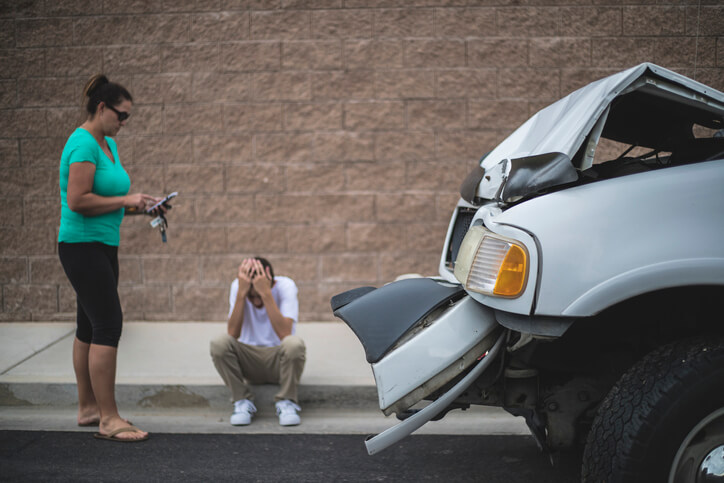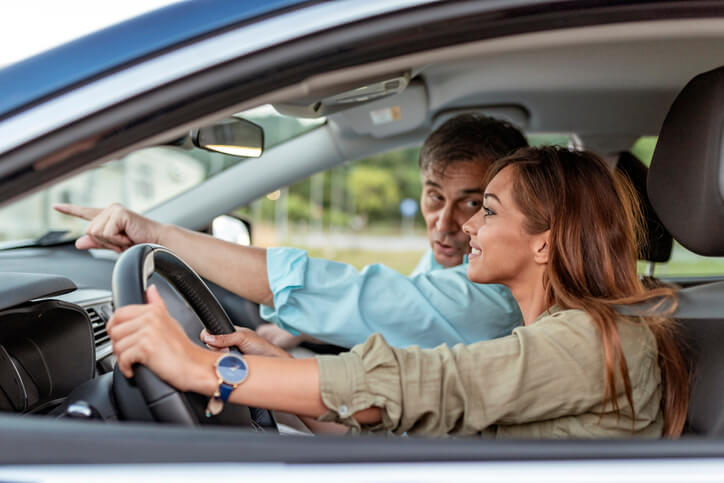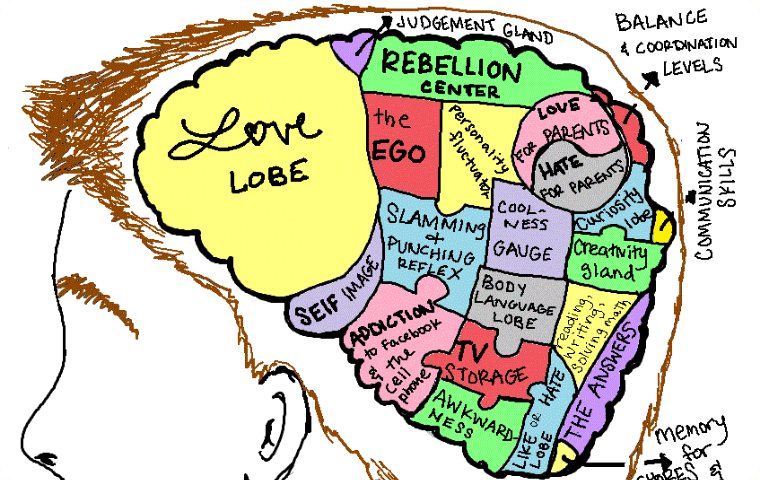Parenting is a never-ending challenge. Since you found out you had a child on the way, you’ve probably been thinking about how you’ll keep them happy, healthy, and safe. When they were younger, you probably researched ways to baby-proof your home, the types of protective equipment they might need for sports and activities, and you’ve always been on top of their health needs, prescriptions, and the like. However, when it comes to becoming a safe and independent driver, you might be underestimating their unique challenges, the risk factors, and the role you can play in making sure they make it home safe and sound after every trip.
Let’s examine these challenges, how your child is learning to drive, their limitations, and how you can get involved to go beyond driver’s ed and protect your child while behind the wheel and help them build the safe driving skills to keep them safe for life.
Unique Challenges Teenagers Face in Becoming Safe Drivers
Hop in the wayback machine and try remembering what it was like as a teenager. No, not the existential angst, academic pressures, or rapid hormonal changes, but that sense of invincibility combined with a need for independence. Remember that feeling? That nothing could hurt you, or that you’d be able to get yourself out of any dangerous situation you might find yourself in? As it turns out, it’s due to how the brain evolves, grows, and changes as we age.
Research has shown that teenage brains are still developing. Specifically, adolescent brains are still growing in the following areas, all of which are fundamental to safe driving:
- Set-Shifting: Think of this as the ability to process a hierarchy of tasks, depending on the situation. There’s no real reason to prioritize holding your breath while sitting on the couch, but if you’re underwater, it’s a priority 1. The way this applies to the infinite combination of factors you face while driving is clear. The need to shift priorities on the fly while behind the wheel is a constant. If you’re too focused on maintaining your lane while there’s an obstacle to avoid ahead, for example, you’ll likely get into a collision.
- Working Memory: Like the RAM in your computer or the space on your desk, working memory represents your ability to multitask. Safe driving means juggling various tasks constantly. Braking, accelerating, using turn signals, monitoring street lights and the other vehicles in traffic, steering correctly, and the like represent just a fraction of the multitasking needed to operate a vehicle safely. Balancing all of these tasks can prove to be challenging for anyone. For developing teenage brains, the multitasking required can present a real problem.
- Inhibitory Control: You know that feeling when you’re focusing on the task at hand and blocking out every possible distraction to complete it? Well, many teenagers might not. On the road, inhibitory control means ignoring unnecessary information to concentrate on what’s important at that moment. You wouldn’t crash because your favorite song started playing on the radio, but a teenager might.
In addition to the challenges mentioned above due to a lack of brain development, teenagers lack the experience of older drivers. Time behind the wheel matters, and teens need more of it, especially in situations with the most significant risk. That’s why Graduated Licensing Programs exist, to provide experience and training in all driving conditions while under the supervision of an experienced driver.
The Benefits and Limitations of Graduated Licensing
While the specifics vary, all 50 States and the District of Columbia have some form of Graduated Licensing Program or GDL. Designed to limit new drivers’ risks as they learn to operate a motor vehicle safely, these programs generally require state-approved online or classroom instruction, behind-the-wheel training with a certified instructor, and supervised driving hours.
By 1996 all states in the United States had implemented a graduated licensing program of some form. They’ve proven effective at reducing crash rates and negative driving outcomes in new drivers by up to 50% while these new drivers are still in the program.
What research and time have proven, however, is that in the period after completing these programs and getting their licenses, teenagers are more likely to be involved in a collision than at any other point in their lives. How likely? Well, drivers are three times as likely to get into a collision during the first six months to a year of unsupervised driving. This propensity goes a long way to explaining why crash deaths remain a leading cause of death for teenagers in the United States.
Given this trend, there is a clear need to provide additional training and oversight during this dangerous window. However, where will it come from once your teen has completed their State’s GDL program and formal driver education? So glad you asked.
Knowledge is Power for Parents
Enter you, their parent, and your child’s best means of continuing to become a safer driver after formal driver education and training.
Unfortunately, studies have shown that many parents underestimate their child’s risks as they begin to drive without a parent or instructor in the vehicle.
Some risks are more apparent than others. For example, 90% of parents correctly see consuming alcohol or drugs before driving as being “extremely risky.” However, many other risk factors can be underestimated or overlooked. Consider the following:
- Only 60% of parents indicated that not wearing a seatbelt represented an elevated risk.
- Only 50% believe inclement weather could pose a problem for their children.
- And just 30% believe that driving at night or with multiple friends in the car contributed to a significant risk of a collision.
If you think that all of the above significantly contribute to potential crashes and collisions involving teenage drivers, you are correct.
Increased awareness of your child’s risk factors is essential, but it’s only the beginning. You can play a more significant role in keeping them safe than you might realize. Research indicates that few factors are more associated with positive driving outcomes during the first year of unsupervised driving than parental involvement and oversight.
So, the question becomes, how can parents equip themselves with the tools and knowledge to continue the principles of a graduated licensing program during this window without needing to be present for every drive? Surely, neither you nor your teenage driver wants you to be along for every trip. It would help if you had a tool at your disposal to help you keep track of their driving progress. Thankfully, as they say, there’s an app for everything these days.
Safer Driving in the Digital Age
Teen driver crashes, injuries, and deaths are not only tragic, but they’re also a real problem in the United States. Roughly seven teenagers die daily in vehicle collisions, and all teenage traffic-related crashes account for nearly 4 billion dollars a year in costs. As such, researchers have been hard at work looking for a solution, and they just may have found it.
Independent studies conducted by the Israeli Institute of Technology, Civil and Environmental Engineering, and the University of Iowa reached a similar conclusion. Each study indicated that a recipe exists for parental involvement during this critical period that can reduce unsafe driving practices by up to 72% in as little as three months without needing a parent in the passenger seat for every drive.
This recipe relies on modern telematic and GPS technology, accessible with any smartphone. Each institution found that equipping parents with enhanced knowledge of risks and safer driving practices, combined with in-vehicle monitoring, educational training feedback, and increased parental involvement, drastically reduced negative driving outcomes.
It makes sense. When you can see your child’s driving performance, offer feedback, and monitor additional driver education training, your teen is much more likely to remember their training and drive significantly safer without you having to be a third wheel on date night.
You probably purchased a baby monitor when they were in a crib. You probably made them wear a helmet when they were learning to ride a bike. As they transition to unsupervised driving, why wouldn’t you use any available tool to keep them safe?
The good news is there are tools at your disposal. Tools like the DriverZ Driving Coach. A first-of-its-kind safe driving application designed to create cooperation, understanding, and expectations between you and your teenage driver during the most dangerous time in their driving life.
Here’s how it works. You download the Driving Coach and invite your teen driver. Then, the Coach measures their performance in 5 critical safe driving metrics:
- Acceleration
- Braking
- Distractions
- Steering
- Speeding
These categories form their overall safety score. The Coach will generate one for each specific drive and adjust an overall score over time to give you a general impression of their driving habits. You’ll see a breakdown of each drive, with problematic driving incidents highlighted on a map for your review. So, you can see if they slammed on their brakes at the intersection next to the grocery store or are still accelerating too hard when they pull away from the stop sign down the block! You can even set goals and rewards for safe driving milestones and monitor their progress to ensure they hit them.
On top of that, when an unsafe driving behavior is detected, the Coach will recommend a micro-learning module, in the form of a short video or interactive game, that targets that specific behavior. Best of all, you’ll have complete visibility on the modules they’ve been recommended to take and have completed.
You may not be a professional driving instructor, but with the Driving Coach in your pocket, you can provide the oversight and support to keep your child safe through the most dangerous driving window of their life. Safer driving for them, peace of mind for you.
Keeping Your Family Safe
The DriverZ Driving Coach sounds great in theory, but it’s even better in practice. If you’re ready to help your teen stay safe on their journey toward becoming a confident and independent driver, you can head to the Google or Apple app store and download the Coach for your device.
From there, invite your teen driver, or even the whole family, to learn together and compete to be the safest driver in your household!
Liam Hoch researches and writes about safe driving for DriverZ.
Having been a passenger in multiple near-catastrophic vehicle collisions, Liam knows first-hand the dangers of distracted, reckless, and unsafe driving.
Passionate about our core principles of helping to make safer drivers and, ultimately, saving lives, Liam stays at the forefront of driving safety innovation and research.























